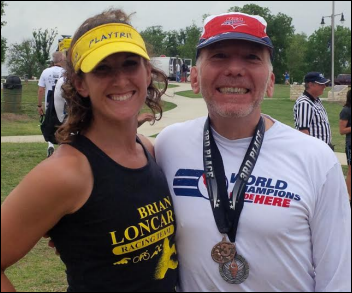I'd never heard of Healwell before and took a look over their offerings. Has anyone used the products? Beyond the…
CIO Unplugged 6/11/14
The views and opinions expressed in this blog are mine personally and are not necessarily representative of current or former employers.
Data-Driven Performance
I have a confession to make. While I am an uber advocate of data-driven performance in healthcare and IT operations, I seldom apply these tools to my personal life. Sure, I look at data when I consider investments and major purchases, but, put it this way, you’ll never see me with a Fitbit!
I am witness to the power of data to shape clinical transformation. Are you kidding me? Serving in organizations with mature electronic health records and advanced business intelligence tools, I see the evidence in our quality reports all the time. Bam! Data-driven outcomes for sure. Evidence-based medicine—check. Ditto on the business side. In fact, my organization is among the first in the country to post our data-driven metrics online. Transparency is a great motivator.
For all my talk on leadership, innovation, connected health, and business intelligence, you might expect me to be a walking wearable. Nope. I’m wired as a visionary. Details are not my forte. I might have a grand idea for a party, but I leave the planning and execution to the detailed-minded organizers.
When it comes to athletic endeavors, I’m about getting to the finish line fast. Forget style and quality form; just get out of my path.
Over the years, the downside of this method caught up with me. Time was no longer my friend. Another confession: my performance had stayed flat for a few years. I wanted to see improvements, so I needed to change.
My friend Ben Levine is a perennial “top doc.” He runs the Institute for Exercise and Environmental Medicine and is one of the world-renowned types who’s been kind enough over the years to help train my mountain climbing teams.

Ben took me through the paces of his research lab. Part of our deal meant I had to be in a study and sport a wearable for a while.
After analyzing all the tests, he told me my body was capable of greater performance. My lifelong conditioning gave me a good base, including a resting heart rate of 40 (occasionally six BPM when asleep). But I had not reached my physiological potential.

I researched and found a triathlon coach to help me get to the next level of performance. Of course, it turned out that Amari of Dallas-based Playtri is a total data hog. She stretches me (no pun intended) beyond my comfort zone with all these wearables and resulting analytics.
In the past, I would cycle in a race and hope for the best by just doing whatever felt good. Now she had me monitoring a combo of heart rate, cadence, and wattage. Speed is secondary. If I focus on the analytics, the outcome (speed) will take care of itself. If I only look at speed, as I did in the past, I might dismount my bike only to find I have no legs left for the run —bonk!
I posted last fall about qualifying for regionals and then for the national Duathlon (run/bike/run) championships. Through grit, I lucked out and secured the last spot (age group) on Team USA. It was not pretty, but I made the team.
With the World Championship on the horizon as well as other important races, the time for data-driven performance arrived. A real life experiment—with me as the subject. Time to walk the talk.
Albeit imperfect in my utilization, Amari’s training formula is completely driven by near real-time data feeds. She makes adjustments based on daily training and race results. I dutifully wear the gear and upload. She parses the data, does meta- and microanalysis, and off we go.
What were the 120-day results?

I am writing this post on the plane home from the World Championships in Pontevedra, Spain. I followed Amari’s race plan, which was all data points: 150-165 BPM heart rate on the first 10K, 270 watts on the bike, never going lower than 165. It was not “outrun the person in front of me,” but to be patient and focus on my data. If I did that, the results would be my friend.
I finished in the top 25. I was the #4 American (an upgrade from #18 last fall) to cross the finish. Data-driven performance! I’m a believer. I can’t wait until I perfect the technology and discipline myself further under Amari’s coaching to see even stronger outcomes.
Personal life imitates professional. We must all push our organizations and ourselves to become data driven.
While being data driven leads to improved outcomes, no data tool could ever create the following. Intrinsic motivation does have a purpose.

The home stretch with .5K to go. I saw the Team USA Manager exhorting us to finish strong. Tim handed me Old Glory as I ran by and said, “Catch two more racers!” I caught my two as I turned into the stadium sprinting to the finish. Waving my country’s flag. Hearing chants of “USA USA USA.” Tears of joy.
Go Team USA!

Ed Marx is a CIO currently working for a large integrated health system. Ed encourages your interaction through this blog. Add a comment by clicking the link at the bottom of this post. You can also connect with him directly through his profile pages on social networking sites LinkedIn and Facebook and you can follow him via Twitter — user name marxists.


Nice Ed.
Occasionally 6 beats per minute when asleep !? That boggles my mind. Interesting post, Ed.
Interesting metaphor. Great post!